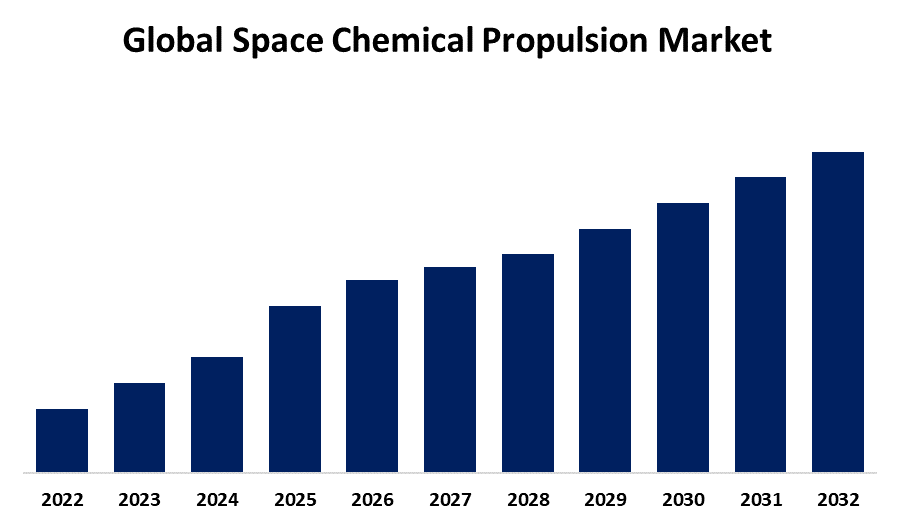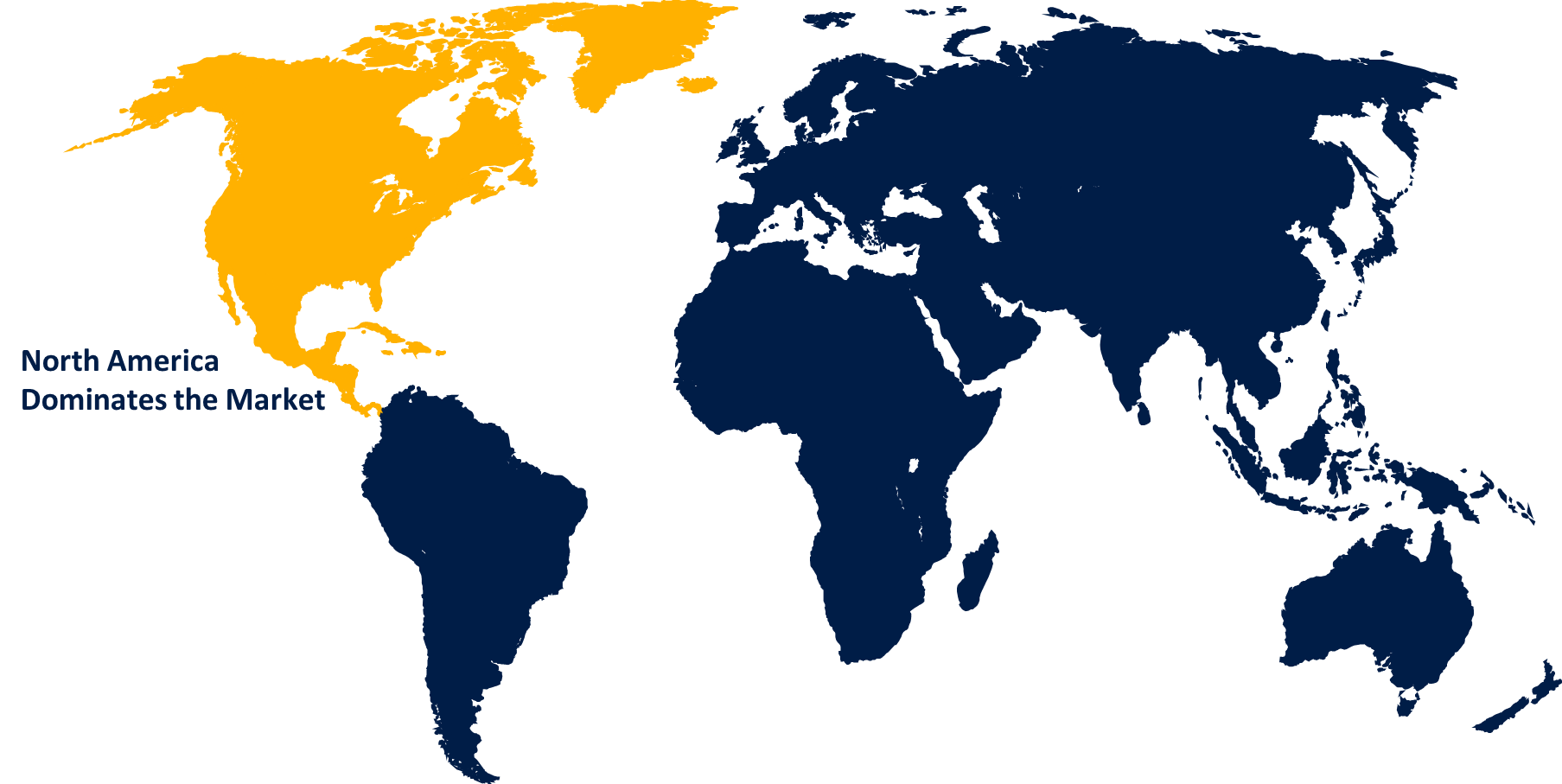Global Space Chemical Propulsion Market Size By Propellant Type (Hydrazine, Green Propellants, and Others), By Type of Testing (Thruster Testing, Propellant Testing, and Environmental Testing), By Thrusters Type (Less than 1 kN Thrusters, 1-5 kN Thrusters, 5-10 kN Thrusters, and More than 10 kN Thrusters), By Facility Availability (Public, Private), By Testing Demand (Aerospace Manufacturers, Space Agencies, Private Space Companies, and Others), By Geographic Scope And Forecast, 2023 - 2032
Industry: Advanced MaterialsGlobal Space Chemical Propulsion Market Insights Forecasts to 2032
- The Global Space Chemical Propulsion Market Size was valued at USD XX Billion in 2022
- The Market Size is Growing at a CAGR of XX % from 2022 to 2032
- The Worldwide Space Chemical Propulsion Market Size is expected to reach USD XX Billion by 2032
- Asia Pacific Market is expected to grow the fastest during the forecast period

Get more details on this report -
The Global Space Chemical Propulsion Market Size is expected to reach USD XX Billion by 2032, at a CAGR of XX% during the forecast period of 2022 to 2032.
Chemical Propulsion Systems generate thrust by releasing energy and accelerating gases through chemical reactions. These systems generate relatively large thrusts in a short period of time. The Global Space Chemical Propulsion Market is a rapidly evolving and crucial segment of the aerospace industry, powering spacecraft for a variety of missions and applications. This market includes the manufacture, development, and deployment of propulsion systems for spacecraft that rely on chemical reactions to generate thrust. These propulsion systems are critical for launching, maneuvering, and maintaining satellite, probe, and crewed spacecraft orbits. The market's expansion is being driven primarily by an increase in satellite deployments for communication, Earth observation, and scientific research. Furthermore, rising government and private sector investments in space exploration, as well as the emergence of new entrants into the space industry, have fueled demand for advanced chemical propulsion technologies. Key players in the global space chemical propulsion market include established aerospace companies as well as innovative startups and research organizations. The market is characterized by a constant pursuit of enhanced efficiency, safety, and sustainability in propulsion systems. Advanced propulsion technologies, such as green propellants and hybrid propulsion, are gaining prominence as alternatives to traditional chemical propulsion methods.
Market Outlook
Space Chemical Propulsion Market Price Analysis
In the space chemical propulsion market, price analysis is a critical consideration given the complex and high-stakes nature of space missions. Prices in this market are influenced by factors such as propulsion system selection, propellant type, and mission specific requirements. Pricing is heavily influenced by the development and production costs of propulsion systems, which include research, materials, and labor. Furthermore, market dynamics, competition among propulsion system providers, and the trade-off between cost-effectiveness and reliability all have an impact on prices. As the space industry evolves and demands innovative, sustainable, and efficient propulsion solutions, price analysis remains a critical component in ensuring missions stay on budget while maintaining the highest performance and safety standards.
Space Chemical Propulsion Market Distribution Analysis
Distribution analysis in the space chemical propulsion market focuses on the efficient and secure movement of propulsion systems, components, and related materials from manufacturers to spacecraft integrators, satellite builders, and launch providers. It encompasses the complexities of global logistics, ensuring the timely delivery of propulsion systems to various space missions. Given the unique requirements of space transportation, distribution channels must adhere to stringent quality control and safety measures. As the global space industry grows, effective distribution strategies will be required to streamline the supply chain, reduce lead times, and maintain the precision and reliability required in space missions.
Global Space Chemical Propulsion Market Report Coverage
| Report Coverage | Details |
|---|---|
| Base Year: | 2022 |
| Market Size in 2022: | USD XX Billion |
| Forecast Period: | 2022-2032 |
| Forecast Period CAGR 2022-2032 : | XX % |
| 2032 Value Projection: | USD XX Billion |
| Historical Data for: | 2019-2021 |
| No. of Pages: | 200 |
| Tables, Charts & Figures: | 110 |
| Segments covered: | By Propellant Type, By Type of Testing, By Thrusters Type, By Facility Availability, By Testing Demand, By Geographic Scope |
| Companies covered:: | Northrop Grumman, Space Exploration Technologies Corp., L3Harris Technologies Inc., SpaceX,Aerojet Rocketdyne Holdings, Inc.,Safran S.A.,Moog Inc., Blue Origin, Ball Aerospace, IHI Corporation, Maxar Technologies, Lockheed Martin, Sierra Nevada Corporation, Rafael Advanced Defense Systems Ltd., Raytheon Technologies and Other Key Vendors. |
| Growth Drivers: | Space Chemical Propulsion Market Dynamics |
| Pitfalls & Challenges: | COVID-19 Empact,Challenges, Future, Growth, & Analysis |
Get more details on this report -
Market Dynamics
Space Chemical Propulsion Market Dynamics
One of the primary drivers is the growing demand for satellites used in communication, Earth observation, navigation, and scientific research. As the number of satellites in orbit increases, so does the need for reliable and efficient chemical propulsion systems to reach, maintain, and change orbits. Government space agencies and private companies are investing heavily in space exploration, leading to an upsurge in missions to the Moon, Mars, and beyond. Chemical propulsion systems are essential for launching and maneuvering spacecraft, making them integral to these ambitious projects. Many governments worldwide are providing financial support and favorable policies to boost their domestic space industries. This support encourages innovation and investment in chemical propulsion technologies, driving market growth.
Restraints & Challenges
Space missions are often budget-constrained, with governments and commercial entities seeking cost-effective solutions. The development and production of chemical propulsion systems, which involve advanced materials, engineering, and quality control, can be expensive. Budget constraints can limit investment in cutting-edge propulsion technology. Providers may face difficulties in balancing the need for cost-efficiency with the demand for high-performance and reliable systems. This restraint can affect the pace of innovation and development in the space chemical propulsion market.
Regional Forecasts
North America Market Statistics

Get more details on this report -
North America is anticipated to dominate the Space Chemical Propulsion Market from 2023 to 2032. North America, and more specifically the United States, has traditionally dominated the space industry. NASA, the U.S. space agency, has been a pioneer in space exploration, and American aerospace companies, both established and startups, have played a significant role in developing and producing space chemical propulsion systems.
Asia Pacific Market Statistics
Asia Pacific is witnessing the fastest market growth between 2023 to 2032. The Asia-Pacific region, particularly China and India, has seen rapid growth in the space industry. Both countries have invested heavily in their space programs, including launching satellites and exploring lunar and interplanetary missions. As a result, the demand for chemical propulsion systems in this region is increasing. Growing government space budgets, technological advancements, and an expanding private space sector in countries like India and China are driving market growth.
Segmentation Analysis
Insights by Propellant Type
The hydrazine segment accounted for the largest market share over the forecast period 2023 to 2032. Hydrazine-based propellants have historically held the largest share of the global space chemical propulsion market. Hydrazine is a well-established, storable, and highly energetic chemical propellant. It has been used extensively in a wide range of space applications, including satellite propulsion, orbit maintenance, and attitude control. Hydrazine-based propellants are known for their reliability and versatility. They provide high thrust and precise control, making them ideal for various mission profiles. Their long shelf life and ability to be stored for extended periods without degradation are also advantageous.
Insights by Type of Testing
The thruster testing segment accounted for a significant market share over the forecast period 2023 to 2032. Thruster testing is a critical component of the space chemical propulsion market. It involves the testing and validation of propulsion thrusters, engines, and related components to ensure their performance, efficiency, and safety. Testing is essential for verifying that thrusters meet mission requirements and regulatory standards.
Competitive Landscape
Major players in the market
- Northrop Grumman
- Space Exploration Technologies Corp.
- L3Harris Technologies Inc.
- SpaceX
- Aerojet Rocketdyne Holdings, Inc.
- Safran S.A.
- Moog Inc.
- Blue Origin
- Ball Aerospace
- IHI Corporation
- Maxar Technologies
- Lockheed Martin
- Sierra Nevada Corporation
- Rafael Advanced Defense Systems Ltd.
- Raytheon Technologies
- Others
Market Segmentation
This study forecasts revenue at global, regional, and country levels from 2023 to 2032.
Space Chemical Propulsion Market, Propellant Type Analysis
- Hydrazine
- Green Propellants
- Others
Space Chemical Propulsion Market, Type of Testing Analysis
- Thruster Testing
- Propellant Testing
- Environmental Testing
Space Chemical Propulsion Market, Thrusters Type Analysis
- Less than 1 kN Thrusters
- 1-5 kN Thrusters
- 5-10 kN Thrusters
- More than 10 kN Thrusters
Space Chemical Propulsion Market, Facility Availability Analysis
- Public
- Private
Space Chemical Propulsion Market, Testing Demand Analysis
- Aerospace Manufacturers
- Space Agencies
- Private Space Companies
- Others
Space Chemical Propulsion Market, Regional Analysis
- North America
- US
- Canada
- Mexico
- Europe
- Germany
- UK
- France
- Italy
- Spain
- Russia
- Rest of Europe
- Asia Pacific
- China
- Japan
- India
- South Korea
- Australia
- South America
- Brazil
- Argentina
- Colombia
- Middle East & Africa
- UAE
- Saudi Arabia
- South Africa
Need help to buy this report?